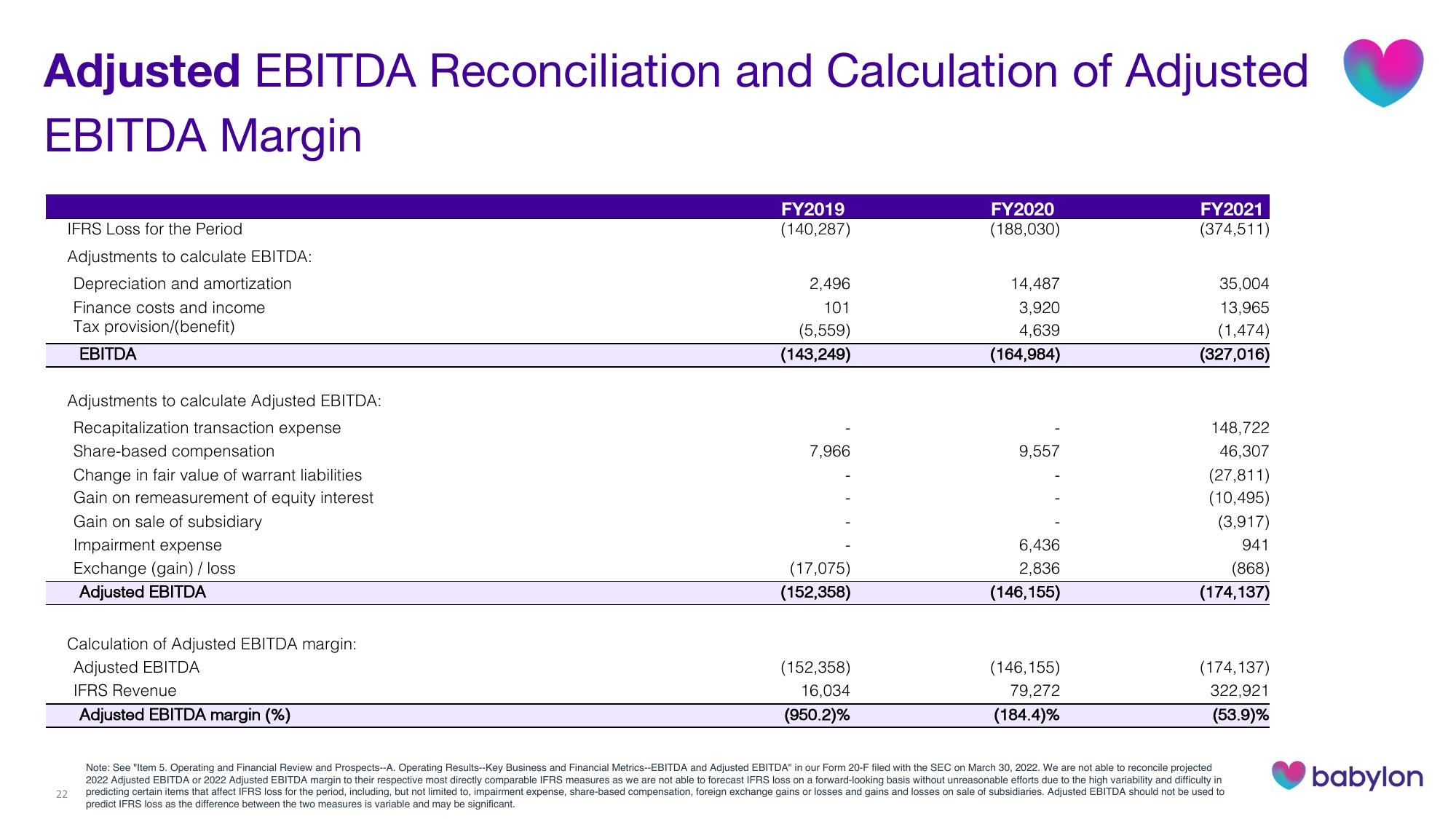Babylon Investor Presentation Deck
Adjusted EBITDA Reconciliation and Calculation of Adjusted
EBITDA Margin
IFRS Loss for the Period
Adjustments to calculate EBITDA:
Depreciation and amortization
Finance costs and income
Tax provision/(benefit)
EBITDA
Adjustments to calculate Adjusted EBITDA:
Recapitalization transaction expense
Share-based compensation
Change in fair value of warrant liabilities.
Gain on remeasurement of equity interest
Gain on sale of subsidiary
Impairment expense
Exchange (gain) / loss
Adjusted EBITDA
Calculation of Adjusted EBITDA margin:
Adjusted EBITDA
IFRS Revenue
Adjusted EBITDA margin (%)
22
FY2019
(140,287)
2,496
101
(5,559)
(143,249)
7,966
(17,075)
(152,358)
(152,358)
16,034
(950.2)%
FY2020
(188,030)
14,487
3,920
4,639
(164,984)
9,557
6,436
2,836
(146,155)
(146,155)
79,272
(184.4)%
FY2021
(374,511)
35,004
13,965
(1,474)
(327,016)
148,722
46,307
(27,811)
(10,495)
(3,917)
941
(868)
(174,137)
(174,137)
322,921
(53.9)%
Note: See "Item 5. Operating and Financial Review and Prospects--A. Operating Results--Key Business and Financial Metrics--EBITDA and Adjusted EBITDA" in our Form 20-F filed with the SEC on March 30, 2022. We are not able to reconcile projected
2022 Adjusted EBITDA or 2022 Adjusted EBITDA margin to their respective most directly comparable IFRS measures as we are not able to forecast IFRS loss on a forward-looking basis without unreasonable efforts due to the high variability and difficulty in
predicting certain items that affect IFRS loss for the period, including, but not limited to, impairment expense, share-based compensation, foreign exchange gains or losses and gains and losses on sale of subsidiaries. Adjusted EBITDA should not be used to
predict IFRS loss as the difference between the two measures is variable and may be significant.
babylonView entire presentation